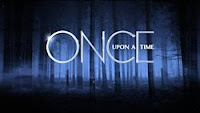Yet the first episode wasn't as compelling as I'd hoped.
Perhaps it's because the back story that explained the curse was filled with hamming, overwrought acting, and weak characterizations. The way the Queen chewed the scenery, I'm surprised there was a shred of tapestry left in the castle. And, please, give me some chemistry between Snow White and her prince, not vapid arguments with dialogue like "I can't believe I'm having this conversation with you again." They're in a fairy tale, not the 21st century.
I liked the way characters were revamped when the story switched to modern times. Mr. Gold was particularly creepy as the man who "owns" Storybrooke, Maine, where the oblivious characters are trapped. Jiminy Cricket as a school counselor is a clever touch, almost too clever.
And the daughter who could be a savior? I get that she's hard-boiled (she escaped the Enchanted Forest before the Queen's curse took effect and her life in the real world was anything but charmed) and her transformation from skeptic to believer has potential. I just hope her character grows in a way that makes me want to care.
Right now, the boy she gave up for adoption has more appeal. He lives in Storybrooke, has grown up reading a book called Once Upon A Time, and believes his real mother is the town's only hope. A bit precocious, but his actions get the ball rolling.
I'm intrigued enough to want to see what happens next, but the acting definitely needs to get ramped up before I'll commit. How about you?


























